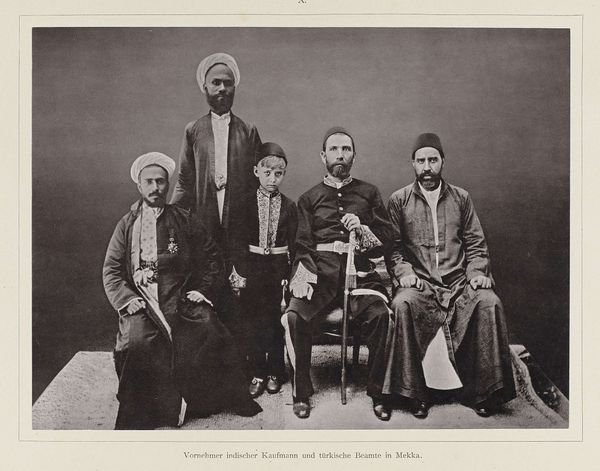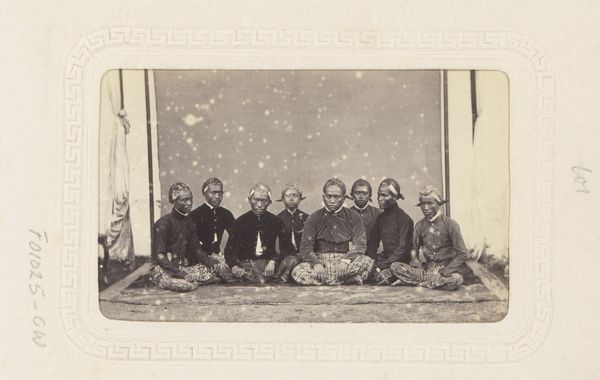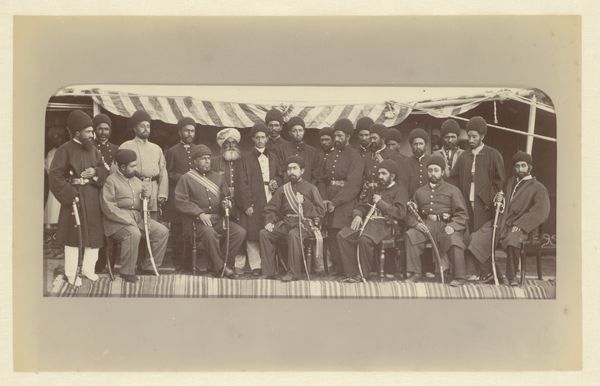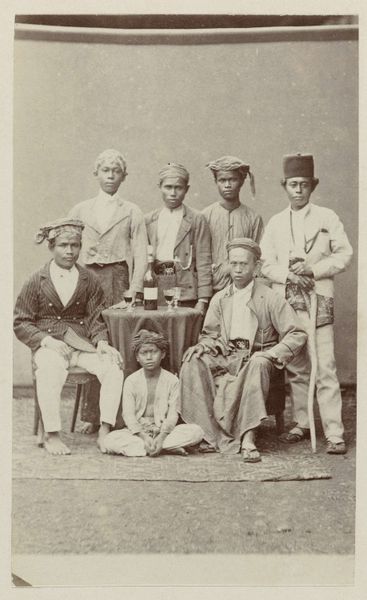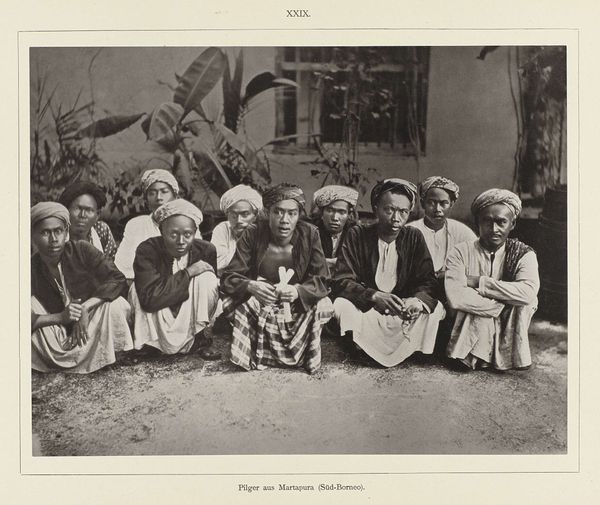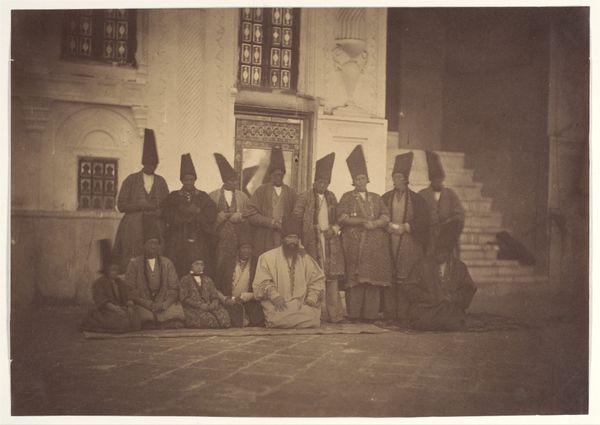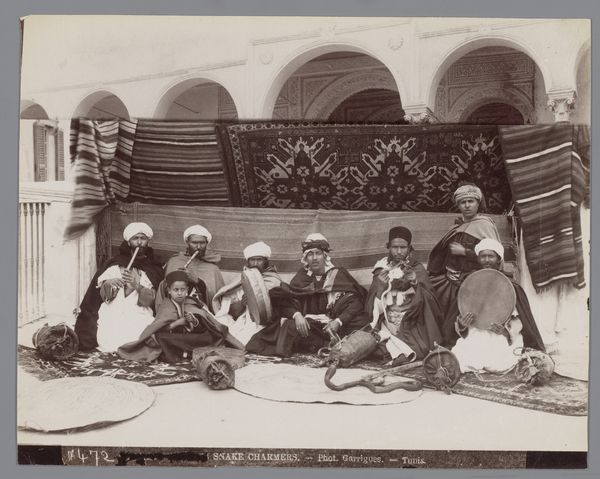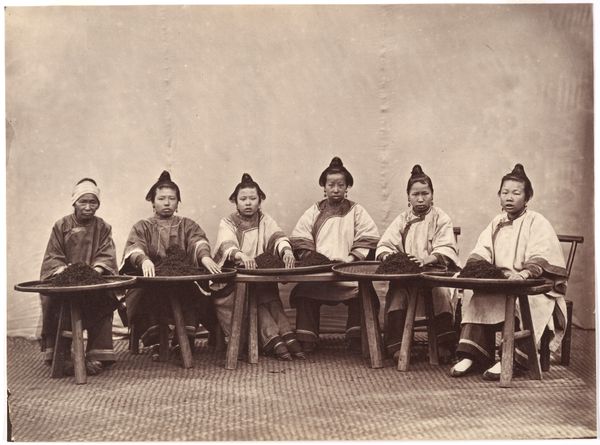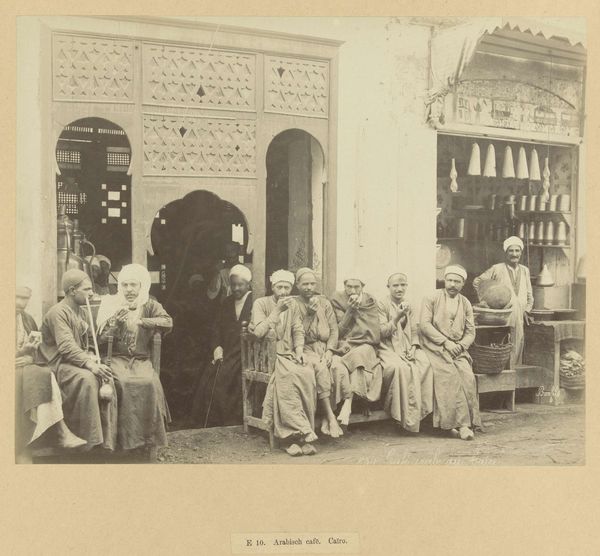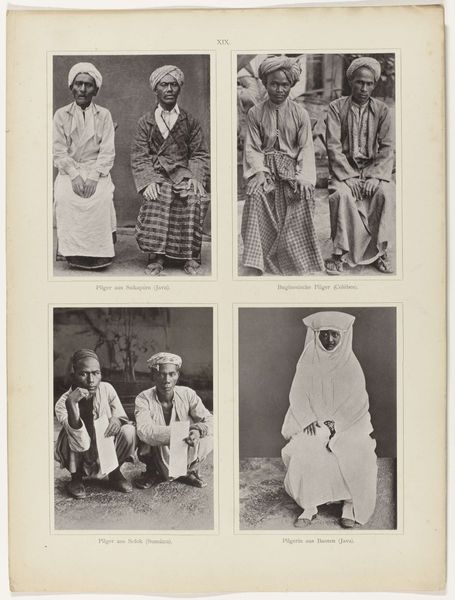
Groepsportret van de familie van Dost Mohammed Khan, met Sjer Ali Khan en Abdoer Rahman Khan 1878 - 1880
0:00
0:00
photography, albumen-print
#
portrait
#
african-art
#
archive photography
#
photography
#
historical photography
#
group-portraits
#
19th century
#
islamic-art
#
albumen-print
Dimensions: height 183 mm, width 304 mm
Copyright: Rijks Museum: Open Domain
Curator: Looking at this image, I'm immediately struck by a feeling of solemnity and controlled power, emanating from the carefully posed figures. Editor: This is an albumen print, dating from 1878-1880, by John Burke. It's entitled 'Groepsportret van de familie van Dost Mohammed Khan, met Sjer Ali Khan en Abdoer Rahman Khan,' a group portrait of the family of Dost Mohammed Khan, including Sher Ali Khan and Abdur Rahman Khan. Curator: The composition, especially the way the light highlights certain faces while leaving others in shadow, amplifies that sense of authority. What about the specific clothing or adornments they chose to be represented with? It is speaking to lineage or faith, or both? Editor: Both, I would argue. Notice the turbans. Each is distinct in its style and wrapping, perhaps denoting tribal or regional affiliation, but worn uniformly, the black headdresses convey a sense of unity under shared lineage and the figures surrounding them echo power relations, and of the impact of colonial documentation on dynastic narratives. I imagine there’s an inherent tension captured here. Curator: Absolutely. The visual language also recalls religious iconography in a way. It is fascinating to see this cross pollination in these carefully staged images, created at this pivotal historical juncture. Editor: Thinking of symbols, even the seemingly simple act of sitting versus standing has significance here. Who occupies the higher ground and who is literally and figuratively "below?" What did it mean to translate dynastic authority into a new representational mode through photographic portraiture? Curator: Precisely. It's an engagement with both internal power dynamics, a very specific political theater, and a clear visual statement toward the outside world. The history of the British presence is crucial to reading into Burke's own history in this complex web of identity. Editor: These historical images allow us to consider a multitude of influences and circumstances, which are then visually translated in carefully preserved objects that speak of larger themes. Curator: It’s a privilege to observe such intersections across the passage of time. Editor: Indeed. It certainly provides insight into cross-cultural narratives.
Comments
No comments
Be the first to comment and join the conversation on the ultimate creative platform.
